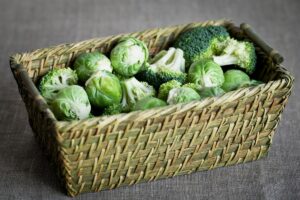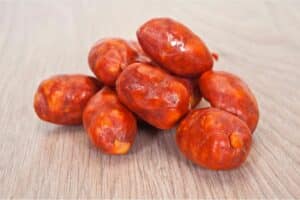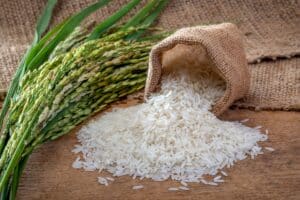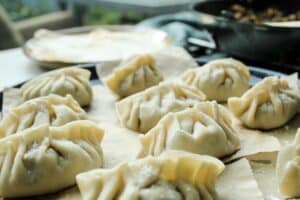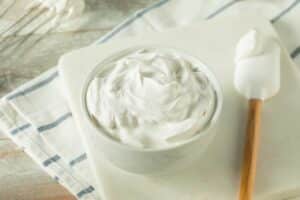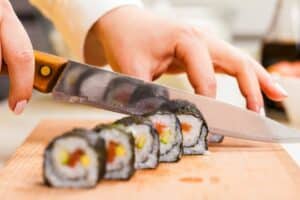Ziti and Penne are two types of pasta that are easy to get mixed up. Given that there are approximately 350 different types of pasta, it’s no wonder there’s some confusion! Both are short, hollow, extruded pasta shapes.
Both are excellent sauce carriers. You can use both in a variety of dishes. So how can you tell the difference? How should you cook each one?
Difference Between Ziti and Penne
End Shape
The main difference between Ziti and Penne is the shape of their ends. Ziti has square-cut ends, while Penne is cut at an angle. Penne’s angled end shape gives it slightly more surface area for sauce and helps to direct the sauce inside the tube.
Texture
The other difference between Ziti and Penne is the texture. Usually, Ziti is a smooth pasta. That means it has no ridges or crinkled edges. Penne, on the other hand, usually has ridges. The ridges run lengthwise from end to end.
Ridges are an essential element to getting the perfect flavor in dishes. Sauce is able to better cling to a noodle with ridges, meaning that you get more sauce per bite.
If your pasta dish has cheese included, the cheese will also stay better connected to your bite, as sauce acts like glue for the cheese and any additional toppings- including meat and vegetables, if your dish calls for those ingredients.
Uses
In general, Ziti tends to be used more in baked dishes. The pasta is able to finish cooking in the oven along with the rest of the dish. This brings out a different depth of flavor in the Ziti.
Penne is more commonly used in fresh dishes, where the pasta is combined with other fresh ingredients rather than being baked or broiled further in the oven.
Penne is also usually served al dente, whereas Ziti is cooked completely.
Unfortunately, the texture is not the best way to distinguish these kinds of pasta. Sometimes, Ziti has ridges, and Penne is smooth. Smooth Penne is called Penne Lisce, and ridged Penne is called Rigate. Similarly, smooth Ziti is called Ziti Lisce, and ridged Ziti is called Ziti Rigate.
The Lisce varietiies are typically less liked than others due to their smooth texture- many view them as pointless because there’s no way the noodle can grasp sauce!
When you go out to purchase your pasta, make sure you read the packaging labels carefully to make sure you’re buying the correct type.
All in all, the best way to tell Ziti and Penne apart is to look at the ends of the pasta. If they’re rounded off evenly, you’ve got some Ziti on your hands. If they’re angled and tapered to a point, then you have Penne.
Ziti vs Penne Comparison Table
Below is a table comparing Ziti and Penne, broken down by the cut, texture, length, width, and uses of each individual pasta.
| Pasta Type | Cut | Texture | Length | Width | Uses |
| Ziti | Square ends | Smooth texture with no ridges | Longer | More narrow | Casseroles and other baked dishes such as macaroni and cheese |
| Penne | Angled ends with a tapered point | Has ridges that run length wise | Shorter | Wider | Fresh dishes, such as pasta salads. |
Can You Substitute Ziti for Penne?
Yes! You can easily substitute Ziti for Penne. Many people do this all the time without even realizing it.
There are no issues with using Ziti when a recipe calls for Penne, and there are no issues using Penne when a recipe calls for Ziti. Since they are both made from the same ingredients, they’ll taste exactly the same.
You might find some slight texture differences in your recipe due to the differences in shape between these two types of pasta. If you’re not worried about the texture of your dish being altered, then no worries.
To substitute Ziti for Penne, cook each as you usually would. They take the same amount of water and the same amount of time to cook. If you are using Penne in a baked recipe that calls for Ziti, you may want to cook the Penne slightly longer before putting it in the oven.
Once you learn more about each type of pasta, you might not want to substitute them. Penne and Ziti are shaped differently for a reason.
The slight differences in shape might seem unimportant at first. However, it is these subtle differences that make each one perfect for a different dish.
What is Ziti?
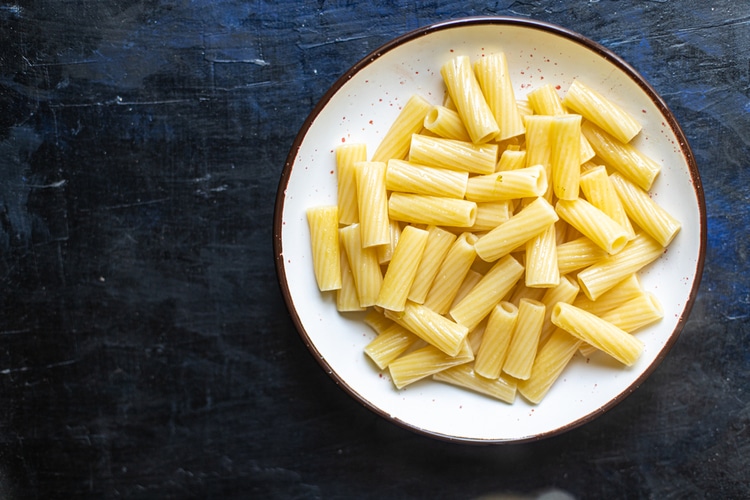
Ziti originates from Naples, in Campania, Italy. As previously mentioned, it’s a hollow, extruded pasta with square-cut ends and a smooth texture.
Ziti is about ¼ inch in diameter and can be anywhere from 1 ½ inches to 3 inches long.
Ziti was crafted through a process called extrusion. This is a process that the pasta goes through before it’s ready to be cooked. The dough is forced through a tool called a die to cut it into a shape. All hollow kinds of pasta are extruded, including the most types of dry pasta that you buy from the grocery store.
The word “ziti” means either “bride” or “groom” in Sicilian, and Ziti is traditionally served as the first course of a Sicilian wedding lunch. It’s a popular menu option for many catering services in both Italy and other countries around the world due to its distinctive taste.
Ziti is made from semolina flour, eggs, and water. Ziti comes pre-cut, or you can buy long tubes that need to be broken by hand into smaller pieces before cooking. If you buy the tubes, they will be around 10 inches long, meaning you can get about five pieces of Ziti from each.
How to Use Ziti
Ziti is commonly used in baked pasta dishes like casseroles and lasagnas. Ziti’s smooth, thin walls and hollow shape mean it becomes soft in the oven. On the other hand, Penne’s ridges make it less soft when cooked. That is why people prefer Ziti in baked dishes.
When baking Ziti into a casserole, cook the pasta until it is al dente. Layer it in the bottom of a casserole dish and layer the other ingredients on top. Put the dish in the oven to finish cooking.
The steam and moisture from cooking the other ingredients will finish the pasta.
Ziti is prone to drying. Make sure you’re not overcooking your pasta when baking it. Ziti should not be crunchy when you pierce it with a fork. Instead, it should be tender with a little bit of give. Remember, it’s best to use Ziti in baked dishes.
What is Penne?
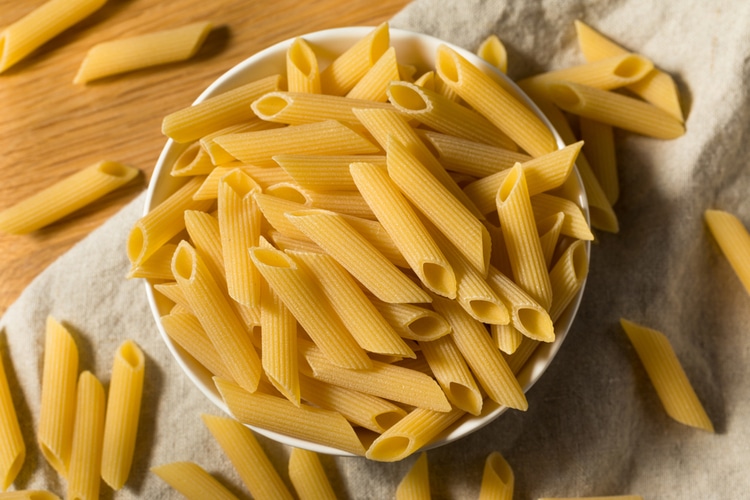
The word “penne” derives from the word for “quill”, and it’s easy to see why when you look at the shape of Penne—it looks like a pen or quill!
Penne is one of the few kinds of pasta that has an exact origin story. In 1865, a pasta maker from San Martino d’Albaro named Giovanni Batista Capurro patented a diagonal cutting machine. His invention cut the pasta into a pen shape without crushing it.
Like most pasta, Penne is made from semolina flour, eggs, and water. It is commonly found as bagged or boxed dry pasta at the grocery store.
To make it yourself, you need to buy an extruder. Penne is not available in tubes, but depending on the retailer you intend to purchase from, you may be able to find fresh cut penne for sale.
How to Use Penne
Penne’s ridges and shorter, wider shape make it better than Ziti for fresh dishes with thick sauces. The ridges help the sauce stick to the pasta, and the short, wide shape makes it more sturdy on your fork. Additionally, the angled ends help to scoop sauce into the tube.
Some of the best-known Penne dishes include Penne all’Arrabbiata, Penne Alla Vodka, and Pasta Alla Norma. Penne is also a great choice for cold dishes like pasta salad because of its rigid, sturdy shape.
When using Penne in a fresh pasta dish or pasta salad, let it cook until it’s al dente, then serve with the sauce. Leaving the pasta slightly undercooked preserves the flavor and allows the pasta to keep its shape. Remember, Penne is best used in fresh dishes.

